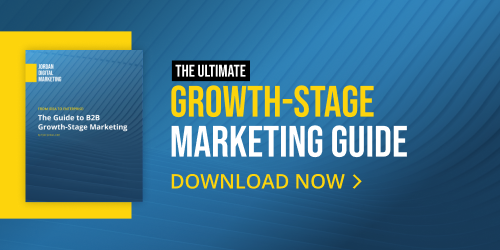Testing Personalized LinkedIn Ads: What’s Working (and What’s Next)
Google recently announced that it will be rolling out new AI features for all advertisers in the US by the end of 2023. These features will enable advertisers to use AI to generate text and image assets for campaigns by utilizing prompts.
This release comes shortly after Performance Max launched new “search themes,” one of many releases that give B2B marketers something to consider when choosing whether to use manual controls or to give Performance Max’s automated campaigns more budget.
Let’s get into some of the questions this is sparking for marketers.
Does this make Performance Max campaigns more viable for B2B?
Not necessarily. The big benefit here is that advertisers will save time in the campaign creation process, with shortcuts for creative and ad copy. But it doesn’t mean we’ll bring in more quality traffic. Performance Max campaigns are the name of the game these days for eCommerce, but I continue to see the placements struggle to generate leads.
What kind of account performance data does the feature leverage, and how?
The algorithm looks at what sort of ad copy/creatives performed well in the past and uses those insights to create new or similar interactions. This is handy, but since Performance Max has very limited visibility into placements and audiences, there’s no guarantee that the creative will be engaging the right people in the right places.
What caveats should marketers keep in mind?
All images created with generative AI in Google Ads will be labeled. Google is using SynthID to invisibly watermark these images, and they will include metadata to indicate that the image was generated by AI. Most users won’t know at a glance (at least at first) that the images were AI-generated, though as with ChatGPT copy, people may get better at recognizing AI as the source with more exposure.
A few marks in Google’s favor here:
1) they claim they’ll never duplicate an image, so each will be unique
2) advertisers will always have the opportunity to review all generated assets before running them in a campaign
3) images will have to meet the approval of Google’s ad policies, which should minimize the potential for offensive content.
Essentially, this just gives you a bunch of customized options to use in your campaigns – again, should you choose to run Performance Max in the first place.
What do you see as the impact for B2B campaigns?
If you’re already running Performance Max and seeing good results, this should help both cut down on resources needed to refresh creative and help you consistently test new themes. Ultimately, it may be Google putting the cart before the horse, since what many B2B advertisers really want is the ability to control bidding and targeting – and/or get more visibility into where and to whom Performance Max is running ads.
Ultimately, it doesn’t change a lot for B2B – yet. If the algorithm steadily improves in finding and engaging high-performing audiences (psst: you’d better be integrating offline conversion tracking), this is a nice bonus. For B2B marketers at the end of 2023, though, this is kind of like putting up some nice windows on a shaky foundation.
If you’re interested in chatting about our approach to B2B/lead gen, we’re happy to set aside some time! Just reach out to start the conversation.
Tags:

Nov 16, 2023 10:00:00 AM


-4.png?width=500&height=500&name=Regular%20Blog%20Hero%20(4)-4.png)
-Dec-29-2025-08-39-03-0239-PM.png?width=500&height=500&name=Regular%20Blog%20Hero%20(3)-Dec-29-2025-08-39-03-0239-PM.png)
-Dec-17-2025-09-01-13-5742-PM.png?width=500&height=500&name=Regular%20Blog%20Hero%20(2)-Dec-17-2025-09-01-13-5742-PM.png)
